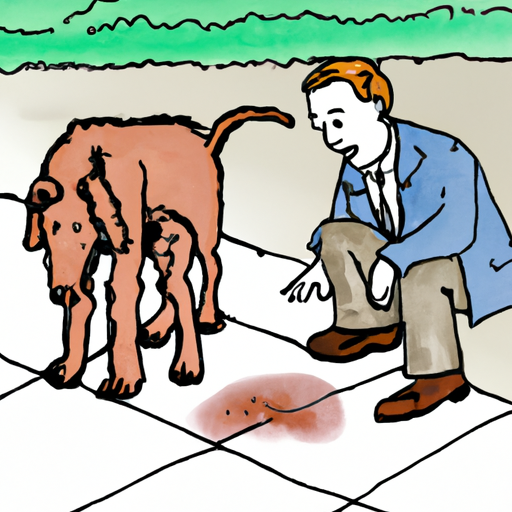As a caregiver to your pet, you need to regularly observe their behavior and physical wellness. One alarming sign that should not be overlooked is the presence of blood in your dog’s vomit. But what exactly does this look like? Let’s explore.
1. Identifying Blood in Your Dog’s Vomit
Blood in vomit can manifest in two ways:
-
Fresh Blood: This is bright red in color, often mixed with the food or fluid your dog has expelled. It’s quite noticeable and may appear in streaks or clots.
-
Digested Blood: This has been in the stomach for a while, and thus, it takes on a darker, coffee-ground appearance. It may even look like tar or dark chocolate, and is often mistaken for something else.
Remember, if you’re in doubt, it’s always best to consult with a vet.
2. Potential Causes of Blood in Dog’s Vomit
There are various reasons why your dog might be vomiting blood, some of which include:
- Gastrointestinal issues: Gastritis, ulcers, or tumors could cause your dog to vomit blood.
- Ingesting harmful substances: Dogs are curious creatures and may swallow sharp objects or toxic substances that can injure their digestive tract.
- Coagulation disorders: Conditions like hemophilia can cause excessive bleeding.
| Cause | Symptoms | Action |
|---|---|---|
| Gastrointestinal issues | Loss of appetite, lethargy, diarrhea | Consult Vet |
| Ingesting harmful substances | Drooling, diarrhea, restlessness | Consult Vet |
| Coagulation disorders | Bleeding gums, nosebleeds, prolonged bleeding | Consult Vet |
3. Immediate Steps to Take
As soon as you notice blood in your dog’s vomit, it’s essential that you do not panic. Here’s what you need to do:
- Collect a sample: If possible, collect a sample of the vomit for the vet to examine.
- Observe your dog’s behavior: Take note of any changes in appetite, energy levels, or other unusual behaviors.
- Contact your vet immediately: Seek professional help as soon as possible.
4. Long-Term Care for Dogs Vomiting Blood
Post-diagnosis, it’s crucial that you follow the prescribed treatment and monitor your dog’s health closely. Here are some steps you can take:
- Strictly follow the vet’s recommendations: Whether it’s medication, diet changes, or lifestyle alterations, ensure you adhere to the advice.
- Maintain regular check-ups: Regular vet visits can help detect any changes early and assess the effectiveness of the treatment.
5. Prevention Tips
Preventing the occurrence of blood in your dog’s vomit largely depends on the underlying cause. However, general tips include:
- Keeping harmful substances out of reach: Ensure objects or substances that can harm your dog are stored safely away.
- Maintaining a healthy diet: Feed your dog a balanced, nutritious diet to promote overall health.
- Regular vet check-ups: Regular health checks can detect any potential issues early.
FAQ
- Q: Is blood in dog’s vomit always a serious issue?
-
A: Not necessarily, but it should be treated as a potential emergency and evaluated by a vet immediately.
-
Q: Can certain foods cause my dog to vomit blood?
-
A: Yes, certain foods like chocolate, grapes, and onions are toxic to dogs and could potentially cause vomiting blood.
-
Q: How can I prevent my dog from vomiting blood?
- A: Regular vet checks, a healthy diet, and keeping harmful substances out of reach are good preventive measures.
Remember, as a caregiver, your attention and immediate reaction can make a huge difference in your dog’s health and well-being.



